

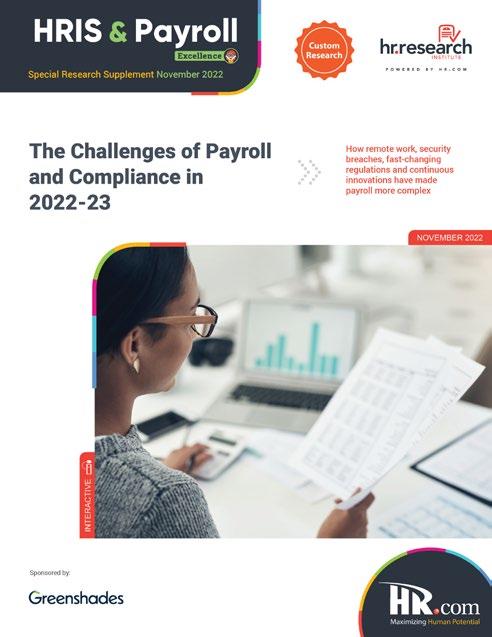

NOVEMBER 2022 • Vol.09 • No.11 TOP COMPLIANCE MISTAKES HR MAY NOT KNOW IT’S MAKING - PART II - Brett Farmiloe, Founder / CEO and CHRO, Terkel.io (ISSN 2564-2030) The Challenges of Payroll and Compliance in 2022-23 Page 27 - 37 Sponsored by How remote work, security breaches, fast-changing regulations and continuous innovations have made payroll more complex
- Nick Shah, Founder and President, Peterson Technology Partners
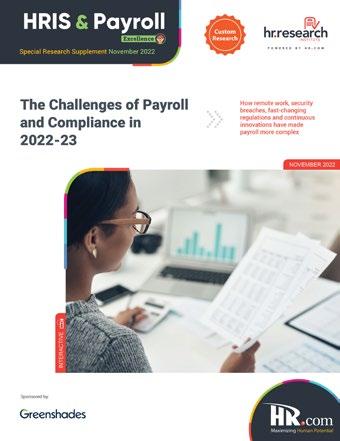



07 On the Cover INDEX Articles HRIS & Payroll Excellence NOVEMBER 2022 Vol.09 No.11 (ISSN 2564-2030) Top Compliance Mistakes HR May Not Know It’s Making - Part II 9 mistakes HR leaders must be mindful of in their workplace
Brett
CEO
CHRO, Terkel.io 11 The Crisis Of [Dis]Connection Facing
Workforce
deskless
17 How To Streamline HR Operations With Smart Automation A deep dive into the HR automation process
Motadata 38 Student Debt
44 The Future Of Work: Five Considerations For Flexibility
the new currency for employees
50
-
Farmiloe, Founder /
and
The Global
Solving the crisis of connection with
workers - Cameron Lindsay, Co-founder and CEO, Haystack
- Amit Shingala, Co-Founder & CEO,
Relief: Questions Employers Face Designing a student loan program that is broadly fair for all workers - Matt Bahl, Vice President, and Riya Patil, Associate, Financial Health Network
Flexibility is
- Keith Falk, Regional Managing Director, HR Consulting, OneDigital
We Need To Talk About The Metaverse What is shaping our future, especially in tech?
The Challenges of Payroll and Compliance in 2022-23 Page 27 - 37
The New Role Of HR
What’s next for HR leaders this year and beyond
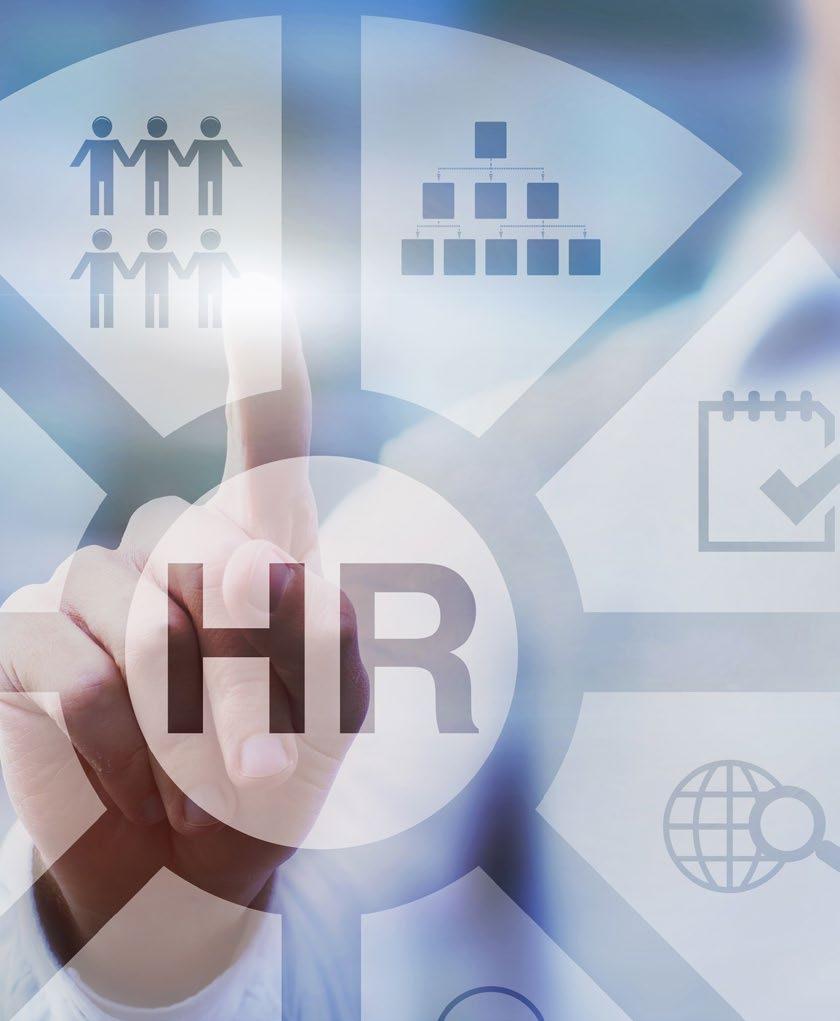
- Ronni Zehavi, CEO and Founder, HiBob

Paid Vacation Days: Which Country Gets The Most?
The United States is the country with fewest days of paid leave (0) and the second lowest number of paid vacation days in the world (10)
- Lotte van Rijswijk, Content Team Lead, Resume.io
3 Things We Learned Moving To A Transparent Pay Approach

Building an equitable and transparent workplace culture
- Cydnee DeToy, Partner and Chief of Staff, Next Street

Top Picks 14 22 41 48
Bill 41: Employers’ Obligations To Injured Workers Set To Increase
British Columbia proposes changes to the Workers Compensation Act
- Gary T. Clarke, Partner, and David M. Price, Associate, Employment & Labour Group, Stikeman Elliott
INDEX
HRIS & Payroll Excellence - Monthly Interactive Learning Journal
This monthly interactive learning experience captures key metrics and actionable items and keeps you focused on your Core HR: Payroll for HR and HRIS management goals and solutions.
HRIS and Payroll Webcasts for Credit
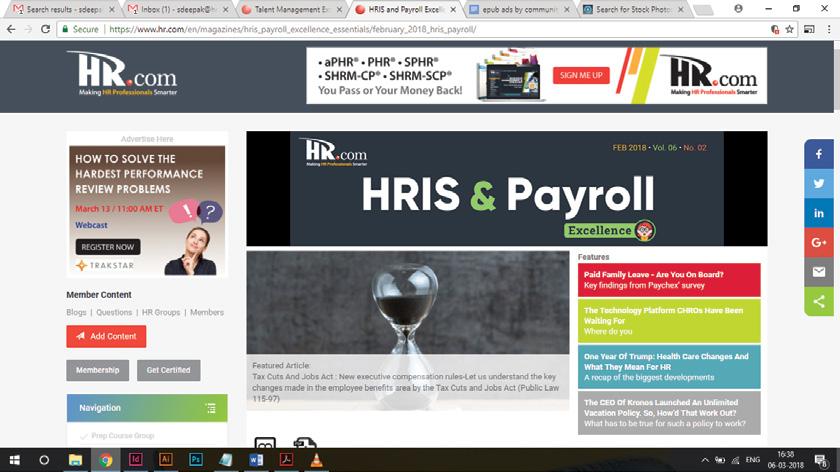
HR.com webcasts deliver the latest HRIS and Payroll industry news, research trends, best practices and case studies directly to your desktop. Webcasts are available live online with a downloadable podcast and a copy of the slides (PDF) available before and after each webcast. Earn all of the required recertification credits for aPHR, PHR, SPHR, GPHR, and SHRM Certifications. HR.com’s one-hour webcasts, in every HR specialty including HRIS and Payroll, are pre-approved for HRCI and SHRM credit (excluding Demo webcasts).
HRIS and Payroll Virtual Events
Virtual Events in the HRIS and Payroll program merge human resources management as a discipline with basic HR activities and processes within the information technology field. With continuous offerings of new technologies in the HR industry to improve HR practices and efficiencies in payroll and any information systems, there’s a boundless need for education as well as surveillance of systems integration. Each Virtual Event consists of up to 10 credit webcasts.

Payroll for HR and HRIS Community
Join over 37,000 HR.com members with a similar interest and focus on Payroll for HR and HRIS. Share content and download research reports, blogs, and articles, network, and “follow” peers and have them “follow” you in a social network platform to communicate regularly and stay on top of the latest updates. This well established Payroll for HR and HRIS Communities are an invaluable resource for any HR professional or manager.
How are our HRIS & Payroll Products and Services helping to make you smarter?
Use these invaluable HRIS & Payroll resources today! For more information phone: 1.877.472.6648 | email: sales@hr.com |
www.hr.com
Editorial Purpose
Mcgrath
Publisher, HR.com
Editor, HRIS & Payroll Excellence
Avoiding Workplace Compliance Mistakes
Your compliance system may have run like a well-oiled machine pre-pandemic, but shifting workplaces present new challenges unique to a remote or hybrid setup. With employees physically and psychologically further from managers and employers, you need to double down on efforts to maintain a culture of safety.
From not providing adequate training on rules and regulations to not adapting risk management and other policies and protocols to remote or hybrid work, there are several things that you may need to check about workplace compliance to see where you may be making mistakes without knowing.
Check out the 9 mistakes HR leaders must be mindful of in their workplaces in Terkel.io Founder and CEO Brett Farmiloe’s article, Top Compliance Mistakes HR May Not Know It’s MakingPart II, featured on the cover this month.
For modern, mid-sized, and flexible businesses, HR is not only increasingly reliant on progressive HR tech, but it is also demonstrating a real appetite to adapt and use even more advanced tech stacks to fulfill employees’ demands. However, great tools must lend themselves to a great experience because, in today’s labor market, it is not enough for any leader to provide what is good; they have to provide tech that is right.
Learn what’s in store for HR leaders this year and beyond in The New Role Of HR by HiBob CEO and Founder Ronni Zehavi.
As the world is moving toward digital transformation, organizations must focus more on automation to make their organization witness faster growth and exceptional opportunities. Motadata’s
Amit Shingala


discusses how companies can streamline HR operations with smart automation
After years of social progress and improvements to work-life balance, conflicting pressures are fragmenting the work world’s approach to paid leave. Employers struggling to attract talent are paying workers more, leaving firms understaffed but with a steep payroll to meet and a reluctance to give time off.
Resume.io’s Lotte van Rijswijk, in her article Paid Vacation Days: Which Country Gets The Most?, shares the findings from a recent study that explored how much paid annual leave and how many public holidays are available in every country around the world – and how paid vacation days compare in total from one place to another.
Also, featured in this edition is an exclusive research report that explores payroll compliance and security for today’s workplace
Also, read 3 Things We Learned Moving To A Transparent Pay Approach by Cydnee DeToy, and Bill 41: Employers’ Obligations To Injured Workers Set To Increase by Gary T. Clarke and David M. Price, among others.
That is not all! We have featured several other articles this month, and hope this edition of HRIS & Payroll Excellence will help you achieve excellence in your HRIS and payroll processes.
Happy reading and don’t forget to send us your feedback!
Disclaimer: The views, information, or opinions expressed in the Excellence ePublications are solely those of the authors and do not necessarily represent those of HR.com and its employees. Under no circumstances shall HR.com or its partners or affiliates be responsible or liable for any indirect or incidental damages arising out of these opinions and content.
NOTE
EDITOR’S
Subscribe now for $99 / year And get this magazine delivered to your inbox every month Become a Member Today to get it FREE! SIGN UP OR For Advertising Opportunities, email: sales@hr.com Copyright © 2022 HR.com. No part of this publication may be reproduced or transmitted in any form without written permission from the publisher. Quotations must be credited.
Our mission is to promote personal and professional development based on constructive values, sound ethics, and timeless principles.
McGrath CEO, HR.com - Publisher
Jeffers VP, Sales Sue Kelley Director (Product, Marketing, and Research) Babitha Balakrishnan and Deepa Damodaran Excellence Publications Managers and Editors Deepak S Senior - Design and Layout HRIS & Payroll Excellence Team Deepa Damodaran Editor Nataraj Ramesh Design and Layout (Digital Magazine) Vibha Kini Magazine (Online Version) Submissions & Correspondence Please send any correspondence, articles, letters to the editor, and requests to reprint, republish, or excerpt articles to ePubEditors@hr.com For customer service, or information on products and services, call 1-877-472-6648 HRIS & Payroll Excellence: (ISSN 2564-2030) is published monthly by HR.com Limited, 56 Malone Road, Jacksons Point, Ontario L0E 1L0 Internet Address: www.hr.com Write to the Editor at ePubEditors@hr.com
Excellence Publications Debbie
Dawn
Deepa Damodaran
Debbie
In a world of unparalleled challenges (global pandemic, racial injustice, polit ical rivalry, digital 4.0, emotional malaise), uncertainty reigns. Finding oppor tunity in this context requires harnessing uncertainty and harnessing starts with reliable, valid, timely, and useful information. The Excellence publica tions are a superb source of such information. The authors provide insights with impact that will guide thought and action.
Dave Ulrich
Rensis Likert Professor, Ross School of Business, University of Michigan Partner, The RBL Group

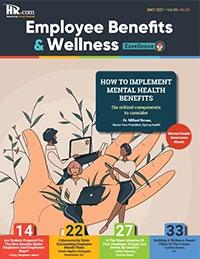
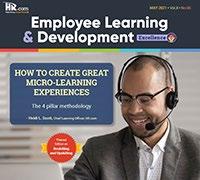
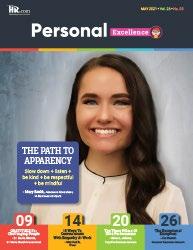
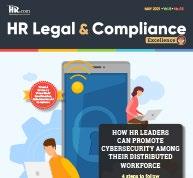
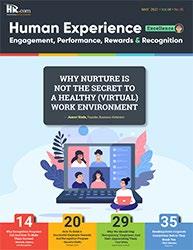
Excellence publications are my ‘go-to’ resource for contemporary and action able information to improve leadership, engagement, results, and retention. Each edition offers rich and diverse perspectives for improving the employee experience and the workplace in general.
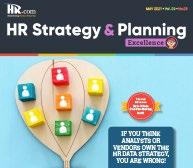
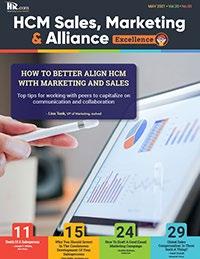
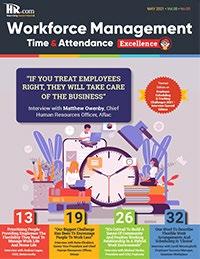
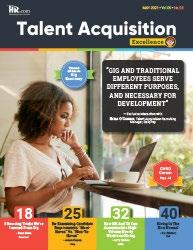
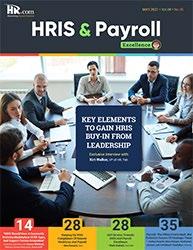

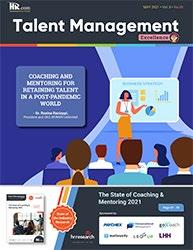
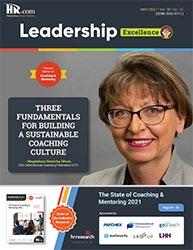 Julie Winkle Giulioni
Julie Winkle Giulioni
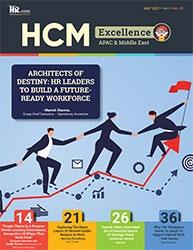
Author, Virtual /Live Keynote Presenter, Inc.’s Top 100 Leadership Speakers
I regularly read and contribute to Leadership Excellence and Talent Man agement Excellence. I use many of the articles I read to augment my own presentations and I often share the articles with my clients. They are always quick, right on target for the latest issues in my field, and appreciated by my clients. If you want to stay up to date on the latest HR trends, choose a few of the different issues from the Excellence series of publications.
 Dr. Beverly Kaye CEO, BevKaye&Co.
Dr. Beverly Kaye CEO, BevKaye&Co.
We’re eager to hear your feedback on our magazines. Let us know your thoughts at ePubEditors@hr.com WHY EXCELLENCE PUBLICATIONS?
Top Compliance Mistakes HR May Not Know It’s Making - Part II
9 mistakes HR leaders must be mindful of in their
By Brett Farmiloe, Terkel.io
HR leaders, what is the one workplace compliance mistake that you (or others) may not know you’re making? How can this be avoided?
To help you identify or avoid workplace compliance mistakes you may be making unknowingly, we asked HR managers and business leaders this question for their best insights. From failure to follow up on investigations to not adapting risk management and other policies to remote or hybrid work, there are several things that you may need to check about workplace compliance to see where you may be making mistakes without knowing.
In Part I, we learned 9 compliance mistakes HR should be mindful of in the workplace
In Part II, we bring you 9 other compliance mistakes these leaders are mindful of in their workplaces:
● Not Providing Adequate Training on Rules and Regulations
● Lack of Understanding of Benefits Compliance
● Failing to Be Proactive in Staying Compliant With Laws and Regulations as the Company Grows
● Not Having Policies for Reporting Workplace Incidents
● Neglecting to Keep Track of Licensing Renewals and Requirements for Employees
● Failing to Get Adequate Training on Company Policies and Procedures
workplaces
● Being Unclear About Questions That Are Illegal to Ask Candidates
● Prohibiting or Avoiding Salary-Related Discussions
● Not Adapting Risk Management and Other Policies and Protocols to Remote or Hybrid Work
1. Not Adapting Risk Management and Other Policies and Protocols to Remote or Hybrid Work
Your compliance system may have run like a well-oiled machine pre-pandemic, but shifting workplaces present new challenges unique to a remote or hybrid setup. With employees physical ly and psychologically further from managers and employers, you need to double down on efforts to maintain a culture of safety.
Remote workers may partake in more risky be haviors when they feel no eyes are watching, col leagues may chat inappropriately on private apps, and sensitive documentation maintenance and disposal can’t be as easily monitored from afar. HR needs to ensure that their risk management policies and protocols are updated to fit their new normal and keep compliance efforts adequate.
Maximilian Wühr, CGO & Co-Founder, FINN

Submit Your Articles HRIS & Payroll Excellence presented by HR.com NOVEMBER 2022 7
COVER ARTICLE
2. Not Providing Adequate Training on Rules and Regulations
It can be difficult to stay up-to-date with all of the different workplace compliance laws and regula tions that are constantly changing. One common mistake that many leaders may not realize they are making is failing to provide employees with adequate training on the company’s policies and procedures. It is critical for employers to provide employees with detailed training on the rules and regulations that are in place to protect both the business and its employees. Not providing adequate training can lead to workplace compli ance issues such as discrimination, harassment, and safety violations. If employers fail to address these issues by providing proper training, this can result in costly fines or lawsuits for the company.
Linda Shaffer, Chief People Operations Officer, Checkr

4. Not Having Policies for Reporting
Workplace Incidents
When it comes to workplace compliance, it’s not just about sticking to the laws and regulations, but it is also about having policies and proce dures in place that help protect employees. What good is all the training and awareness about mental health, bullying, discrimination or sexual harassment if there are no policies in place that can help employees know what to do when an in cident occurs? This is a common mistake many organizations make and it prevents employees from speaking up, taking action and can cause harm to the business, company and employees when incidents go unreported. To help improve the situation, it is important to not only have clear policies to support employees but also make sure they understand how to identify and report workplace incidents.
 Jenna Nye, CEO, On the Strip
Jenna Nye, CEO, On the Strip
3. Lack of Understanding of Benefits Compliance
One of the biggest workplace compliance mis takes that many organizations make is failing to understand benefits compliance. This can lead to a number of consequences, including fines and penalties from government agencies.

How can you avoid benefits compliance issues in your organization?:
● Be aware of all the rules and regulations surrounding employee benefits administration, which come from federal and state authorities, as well as benefits providers.

● Train your staff on how to administer employee benefits programs correctly. This includes being up-to-date on health care reform requirements like the Employee Notice of Exchange.
● Ensure that your employees are properly and promptly notified about any upcoming changes to their benefit plans.
Nir Leibovich, CEO and Co Founder, GoCo
Top Compliance Mistakes HR May Not Know It’s Making - Part II
Submit Your Articles HRIS & Payroll Excellence presented by HR.com NOVEMBER 2022 8
5. Neglecting to Keep Track of
Licensing Renewals and Requirements for Employees
It’s crucial to stay on top of the licenses of relevant employees. Some positions require the renewal or updating of licenses for a specific peri od. Neglecting to keep track of licensing renewals and requirements means having employees with expired licenses, putting your company at risk for lawsuits and other negative consequences. Avoid this by having a database of this information arranged in a way that is easy to pinpoint employ ees with upcoming license expiry dates. Include such a workflow in your company’s dashboard to automate the process.
Ruth Novales, Marketing Director, Fortis Medical Billing Profes sionals

6. Failing to Be Proactive in Staying Compliant with Laws and Regulations as the Company Grows
With great growth comes great responsibility. It’s such a win when your business is experiencing rapid success and growth - however, this is where mistakes happen. As an HR leader, if you fail to stay compliant as you grow, you’re going to put your whole company in jeopardy.
For example, if your employee numbers grow more than 50 but you’re trying to comply with the Affordable Care Act, you’re going to have to bump those overflow employees to independent con tractors, but independent contractors have their own set of regulations you need to be compliant with.

As your company grows, your HR leaders need to be incredibly proactive in staying compliant and knowing the ins and outs of what your growth entails so that no laws are broken and your team gets everything they need to do their job success fully.
7. Being Unclear About Questions That Are Illegal to Ask Candidates
It’s no secret that since the untimely death of George Floyd, many organizations have scram bled to put together Diversity, Equity, and Inclu sion (DEI) programs. While it’s great that many companies are prioritizing DEI in the workplace, it’s important to have DEI goals that are clear and are not creating a compliance risk by asking illegal questions during the interview process. It creates tremendous risk and is illegal to ask a candidate about their race and gender during the interview process. Candidates can elect to self identify however; this is a 100% voluntary process. If a candidate elects not to disclose this information, an employer cannot mandate it.

 Tawanda Johnson, HR Leader, Sporting Smiles
Jimmy Minhas, Founder & CEO, GerdLi
Tawanda Johnson, HR Leader, Sporting Smiles
Jimmy Minhas, Founder & CEO, GerdLi
Top Compliance Mistakes HR May Not Know It’s Making - Part II
Submit Your Articles HRIS & Payroll Excellence presented by HR.com NOVEMBER 2022 9
8. Failing to Get Adequate Training on Company Policies and Procedures
One of the biggest workplace compliance mis takes is failing to get adequate training on your company’s policies and procedures with respect to things like sexual harassment, discrimination, and other workplace issues. Without this training, it can be easy to unintentionally violate the law or company policy.
To avoid falling into this trap, make sure that you are always up-to-date on the relevant laws, regulations and your company’s policies and procedures. And remember that it’s always better to ask questions before you act, rather than having to deal with the consequences of getting it wrong. Because legislation and policy are always evolving and changing, you should consider that your training in HR will never be ‘finished’. Instead, training in HR law and policies is an ongoing process, and ensuring your training and knowledge base are regularly updated is a fundamental method for avoiding unknowingly making mistakes.
9. Prohibiting or Avoiding Salary-Related Discussions
One of the most common compliance mistakes that I have noticed others make is prohibiting or suppressing salary-related discussion in the public. Discouraging employees from openly discussing their salary with their coworkers in the workplace naturally induces suspicion about unethical salary distribution practices. Some employees may feel less valued as a result since they may believe that their efforts are not prop erly compensated for. Plus restricting employees from approaching salary raise talks will only in cite them to resent the work process and people in the management.
This problem has an easy fix. Be open, direct, and unambiguous with your salary distribution pro cess. Give the employees complete freedom to contact you directly for more clarification regard ing paycheck-related questions, if not in public during working hours. Enable a merit-based promotional/increment work paradigm as well to prevent employees from constantly feeling like their careers are stuck.
Ian Wright, Managing Director, Business Financing

 Sally Johnson, CEO & Founder, Greenlightbooking
Sally Johnson, CEO & Founder, Greenlightbooking

Top Compliance Mistakes HR May Not Know It’s Making - Part II Submit Your Articles HRIS & Payroll Excellence presented by HR.com NOVEMBER 2022 10
Brett Farmiloe is the Founder / CEO and currently the CHRO of Terkel.io . Brett is an SHRM Influnecer and has also been a keynote speaker at several state SHRM conferences on employee engagement. Would you like to comment?
The Crisis Of [Dis]Connection Facing The Global Workforce
Solving the crisis of connection with deskless workers
By Cameron Lindsay, Haystack
The past decade has seen significant changes in the world of work and there has been a major increase in the number of employees who are using mobile devices. In 2018, VC firm Emergence published a Deskless Workforce report showing that 80 percent of the global workforce does not work in front of a computer on a daily basis. About 2.7 billion people earn a living in deskless fields, such as agriculture, hospitality, healthcare, retail, transportation,
and education. Even in-office workers are more mobile today, using personal phones for work more than ever before.
The web of work now extends to every member of an organization. This has led to a huge demand for technology solutions that cater to everyone, whether they are across the hall or across the globe, at a desk, a coffee shop, or in the field. The problem is that, traditionally, very little of the $300 billion annual spend on business
software has been allocated to deskless workers. This has left us facing a crisis of connection, adding to the 60 percent of people already reporting being emotionally detached at work.
When it comes to providing the optimal employee experience for the deskless, why should leaders care?
Disconnection Is Expensive
One Boston Consulting Group survey of more than 7,000 workers in the U.S., Australia, France, Germany, India, Japan, and the UK showed in July 2022 that a whopping 40 percent of deskless workers may soon quit their jobs. Cigna reports that dis connectedness causes high staff turnover, with lonely employees costing U.S. companies up to $406 billion a year. Considering that worker loneliness is but one symptom of disconnection, the cost of disconnection is significantly higher.
Submit Your Articles HRIS & Payroll Excellence presented by HR.com NOVEMBER 2022 11
How might organizations transform the employee experience for deskless workers and solve the crisis of disconnection with this critical constituency?
Purpose-Built Tools Rule

To unlock the full potential of a deskless workforce, businesses should work proactively to foster connection and empower their employees with the right purpose-built tools, systems, and elements that foster a culture of connectedness.
Global enterprises, such as Adidas, Merck, T-Mobile, and Walmart, are making great headway in this regard. These companies have all implemented digital transformation initiatives dedicated to the needs of their deskless employees. Their programs focus on streamlining processes, automating tasks, and making data more accessible and actionable. As a result, they have seen increased employee satisfaction, reduced turnover, and in many cases, a direct increase in business metrics, such as sales, customer satisfaction, and inventory accuracy.
Mid-size companies with large numbers of remote and deskless workers are going through a similar transformation.
Essential to this “cultural glue” is a centralized, lean “source of truth” (traditionally, intranet) to house communications and resources, while fostering
personal connections and empowering staff to work more seamlessly. It is easy for messages to become distorted as they pass through layers of communication. If deskless employees do not have an official resource they can trust, they will build those connections organically without leadership’s input.
No single tool or app will solve the problem of disconnection. Technology may bring us closer together, but management does not stop there. Two further aspects are critical for building and growing connections between in-office workers, deskless, and management.
Leading from the Top
The companies that are most effective at building strong connections with remote and deskless staff are the ones that are led effectively - from values, to resources specifically for deskless workers, to crafting an engaging workplace experience for everyone. Great leaders encourage and seek out participation through active listening. Employees, who feel heard also feel safe to contribute fresh ideas, leading to them being more engaged and productive.
Great leaders also amplify diverse perspectives. Deskless employees hold a tremendous amount of institutional knowledge that is often overlooked, dismissed, or unreported. Whether it is a community that is being
underserved, early warning about a safety issue, or anything in-between, that perspective can be transformative. Create an environment where everyone’s voice can be heard and the best idea wins, not the loudest.
Champions
Tech solutions cannot stand alone - champions are essential to bringing all employees along on the journey. This crisis of connection is a costly risk, but also an opportunity for business leaders to implement the right tools and processes, and make improvements to the modern employee experience that will benefit everyone. It is not enough to throw money and tech at the problem. Leaders, champions, and team members driving organizational change matter equally.
Would you like to comment?
The Crisis Of [Dis]Connection Facing The Global Workforce
Cameron Lindsay is the Co-founder and CEO at Haystack
Submit Your Articles HRIS & Payroll Excellence presented by HR.com NOVEMBER 2022 12
y Do you have expert payroll knowledge to share? y Do you have great ideas for improving payroll education and training? y Interested in being at the forefront of an engaging, new Payroll Certification?

Join our Payroll Advisory Panel to guide the next frontier of education and certification Calling Payroll Experts… HR Needs Your Expertise! Learn More
The New Role Of HR
What’s next for HR leaders this year and beyond
By Ronni Zehavi, HiBob
Last year, tens of millions of people in developed economies left their jobs throughout a post-pandemic driven phenomenon that has earned itself the tag: the Great Resignation. Over time, it became apparent that people were not just leaving jobs or work altogether, but are also using the temporary safety net of pandemic-led stimulus to find better ways of earning a living.
So the Great Resignation gave way to the Great Renegotiation. Higher pay, stable hours, and flexibility ranked highly for these movers and shakers. People took advantage of this unique moment in economic and social history to recalibrate what they wanted from life and expected from employers.
Expect Greater Flexibility and Engagement for Employees
The upshot has been that workforces in mature economies are no longer willing to tolerate substandard employee experiences. Meanwhile, businesses quickly understood that the balance of power had shifted forever—in favor of job candidates—and that the new killer benefit any business can offer recruits is a positive company culture. We can expect greater flexibility, communication, and feedback as major themes in employee management over the coming 12 months.
The task of activating, executing, and managing the components that underpin business continuity has fallen squarely on the shoulders of the HR function. These are clear when you look at the data from a recent joint HR Benchmark study that our insights team at HiBob commissioned with US HR consultancy firm, Workology.
HR Takes a Bigger Role in Culture and Retention
The research shows that HR professionals are increasingly becoming accountable for, on average, 11 areas of responsibility, including culture and engagement, DE&I, onboarding, and employer branding.

In fact, nearly two-thirds (63 percent) of respondents said they now oversaw this last directive. In a sense, HR has become somewhat of a planning committee—creating team outings and events that allow employees to feel a sense of belonging and connection to the company and their coworkers.
Interestingly, the research also shows a staggering 70 percent of top HR leaders are now reporting to the CEO, indicating the function has moved up the ranks of the pecking order to become an essential contributor in high-level company business decisions.
Submit Your Articles HRIS & Payroll Excellence presented by HR.com NOVEMBER 2022 14 TOP PICK
All of these areas intersect with and influence the employee experience. In this sense, HR must find ways to create a positive and supportive culture for teams to ensure employees not only feel welcomed but stay at the company for the long haul. With 52 percent of those polled stating retention and turnover were their top business imperatives this year, it is no surprise that finding, attracting, and keeping high-performing employees has become a priority for HR professionals. HR teams will continue to acknowledge that a better employee experience means a better bottom line.
If they get this wrong, HR teams risk company losses associated with the time it takes to fill vacant positions—an average of 5.4 months, according to another study we did at HiBob with job listing marketplace provider, Fiverr.
Give HR the Right Tech for Business Success
This all sounds difficult and complex because it is difficult and complex. In fact, for modern, mid-sized, and flexible businesses, HR is not only increasingly reliant on progressive HR tech, but it is also demonstrating a real appetite to adapt and use even more advanced tech stacks to fulfill these tall orders.
However, great tools must lend themselves to a great experience because, in today’s labor market, it is not enough for any leader to provide what is good; they have to provide tech that is right.
HR professionals understand that managing incoming and outgoing talent is not just a question of a welcome lunch or exit interview and leaving card. Instead, they need analytics capabilities to mine data for use in hiring, developing, and retaining the best employees. In this way, they should consider themselves internal service providers that ensure high returns on people investments.
Our survey with Workology points to the fact that HR now maintains robust tech modules set up to churn out metrics and data, the analysis of which helps them attain company KPIs. For HR, these will now go far beyond basic core HR functions and more toward driving elements, such as engagement, performance,
and values. In this way, HR can create and implement intentional cultures directly responsible for accelerating performance.
Increase in HR Budgets
Rises in HR budgets are also validating the growing importance of HR roles. The HiBob-Workology survey notes that around half (45 percent) of HR professionals said their HR budgets will increase by up to 20 percent over the next year, and an additional 6 percent said it would increase by 30 percent or more.
This benchmark goes a long way toward revealing just how crucial a part HR now plays in high-level business planning at modern organizations. Another clear indicator is seeing how often HR is now led by or reports directly to a C-level executive (70 percent report to the CEO and an additional 3 percent to the board). It shows that chief human resource officers (CHROs) and other HR leaders are progressively being held responsible for, and indeed being entrusted with, the overall success of a business. The profile of human resources leaders is rising—along with ambition levels.
While it all started with HR playing a leading role in helping companies adjust to the pandemic’s impact on the workplace—namely figuring out how to build and maintain great remote and hybrid work practices—the charge is now, and will continue to be extended towards creating cultures and overseeing the end-to-end employee experience.
Agility in a Slowing Economy
Not even the anticipated challenges around a possible economic downturn in the second half of 2022 will likely derail HR’s holy trinity of engagement, culture, and retention. These anchors will become even more important to provide a level of “uncertainty management.” This being the case, a system based on old rules—a hierarchy that solves for uniformity, bureaucracy, and control—will no longer be effective.
Taking its place should be a model that is more flexible and responsive to the ebbs and flows of market dynamics, and the HR function will be central in helping activate the right levers.
The New Role Of HR
Submit Your Articles HRIS & Payroll Excellence presented by HR.com NOVEMBER 2022 15
To shepherd the organization of the future, regardless of the anticipated slower growth economy, CHROs and other leaders should do nothing less than reimagine the basic components of what makes a business successful. Prioritizing initiatives that strengthen their organization’s ability to drive change in leadership, culture, and employee experience, and then mapping that back to its greatest assets— humans will be key. When companies become more human, they are by default more inspiring, collaborative, and set up to create an employee experience that is meaningful and enjoyable.
While employee retention will continue to challenge businesses in the coming year, so will ensuring the right people are retained at a time when financial management may also need to become a consideration, and it will entail leading in new ways valued by your top performers.
Outlook for 2022 and Beyond
McKinsey recently conducted research on how businesses can best organize for the future. Early findings suggest that future-ready companies share three characteristics: they know what they are and what they stand for, they operate with a fixation on speed and simplicity, and they grow by scaling up their ability to learn and innovate.
According to Fortune Business Insights, the HR technology market will be worth 35.68 billion dollars by 2028, with a 5.8 percent CAGR. This will be driven by rising demand for predictive and workforce analytics-enabled tools for growth. Successful organizations will work together with their people to create personalized, authentic, and motivating experiences that tap into purpose. This, in turn, will strengthen individual, team, and company performance. And, you guessed it—the HR team is central in shaping this whole business module.
Going forward, we may see more automation of certain tasks, particularly as it relates to the employee experience—things like making onboarding smoother and more customized so that new people feel individually welcomed and can quickly bond with your company culture, values, and colleagues.

Removing the need for HR to deliver these workflows manually will mean they can focus more on the people themselves. In this sense, the heart of HR will continue to be human at its core.
HR will be centered more on understanding and empathizing with the candidate’s and/or hire’s different needs as these directly affect motivation for individuals. From reskilling people to perform in the new digitized workforce to being cognizant of other drivers, such as work-life balance, career opportunities, training and development, DE&I initiatives, flexibility, or simply providing a climate where work feels meaningful will likely dominate the HR agenda.
With the right tools, HR is perfectly positioned to ensure the employee experience continues to be positive. Similarly, while HR’s roles continue to expand, companies are taking note and making sure that they support their HR teams. Modern HR will, it appears, firmly take a seat at the core of organizations’ key decision-making processes going forward, ensuring companies place the focus on today’s workforce expectations.
In short, creating a highly engaged workforce and a thriving workplace continues to be a major focus for all HR managers. And the reason is simple—every business needs what employee engagement creates: happier and more productive employees.
Would you like to comment?
Ronni Zehavi is the CEO and Founder of HiBob
The New Role Of HR Submit Your Articles HRIS & Payroll Excellence presented by HR.com NOVEMBER 2022 16
How To Streamline HR Operations With Smart Automation
A deep dive into the HR automation process
By Amit Shingala, Motadata
As the world is moving toward digital transformation, organizations must focus more on automation to make their organization witness faster growth and exceptional opportunities. Irrespective of any department, automation helps conquer manual activities and provides faster outcomes with incredible results. Whether it be collecting the personal information of the candidate to onboarding program, automation can streamline the whole process for your organization.
The human resources (HR) department of your organization faces formidable challenges, and
automation can help them overcome and seek incredible opportunities.
As your business grows, you will need to find ways to automate specific tasks to free up your HR team to focus on more important strategic initiatives. Not only your HR department, but the whole automation process will bring more satisfied employees into your organization.
In this article, we will share some best practices for HR automation so that you can get started streamlining your processes.

What Is HR Automation?
HR automation is the process of automating HR processes and tasks. This can include everything from automating employee onboarding to tracking employee performance. By automating HR processes, businesses can save time and money and improve efficiency. Apart from business operations, HR automation will also drastically improve the overall work environment and enhance the culture of your organization.
In addition, by integrating HR automation tools, organizations can witness better collaboration between employees, which will ultimately enhance the productivity and performance of the organization.
Submit Your Articles HRIS & Payroll Excellence presented by HR.com NOVEMBER 2022 17
Here Are Some Daily HR Processes that Can Be Automated:
1. Automating employee onboarding: Most modern ITSM tools come with predefined workflows and templates to automate the most systematic process in HR, which is onboarding.
2. Tracking employee performance: Build channels to receive feedback from managers and automate tasks related to report generation.
3. Managing employee records: Build a service catalog, a prominent feature in most ITSM tools, where you can host all HR-related services.
4. Generating payroll reports: Build workflows to create and distribute payroll reports and eliminate human intervention.
5. Creating and managing employee schedules: Leverage a dashboard to make data easily accessible.
So, integrating automation into your HR operations will constantly add more value to your organization and provide you with incredible results in the long run. According to one research, around 58% of businesses have witnessed improvements in
employee retention by adopting enterprise service management in the HR department to streamline HR operations.
What Are the Benefits of HR Automation?
The benefits of HR automation are many and varied. By automating HR processes, organizations can improve efficiency and accuracy, reduce costs, and improve compliance with regulations.

In addition, automating HR can help free up HR staff to focus on more strategic tasks.
Some additional benefits of HR automation include the following:
1. Improved efficiency and accuracy in HR processes
2. Reduced costs associated with HR processes
3. Increased compliance with government regulations
4. Improved ability to attract and retain top talent
5. Better alignment of HR strategies with business goals
6. More effective management of employee data
7. Greater insight into the workforce through data analytics
8. Enhanced decision-making capabilities through data-driven insights
9. Increased employee satisfaction and engagement
How To Streamline HR Operations With Smart Automation
Submit Your Articles HRIS & Payroll Excellence presented by HR.com NOVEMBER 2022 18
How to Automate HR processes?
It is possible to automate your HR process and witness excellent outcomes with the help of automation, So now you might be thinking about how to automate your HR processes. If so, here are some best practices to follow:

Define your goals and objectives
Here is a list of questions that you need to answer to decide the goals and objectives; the questions are:
● What are you hoping to achieve by automating your HR processes?
● How will it be beneficial for the organization?
● What are the long-term outcomes?
If you know the answer to all these questions, you can easily set goals for the HR department, and integrating the right HR automation tool will help you achieve those goals.
Streamline your data
Before automating anything, you must ensure that your data is clean and organized. This will make it much easier to input into your automation system
and help ensure accuracy. In addition, organizing data efficiently will help you implement automation proficiently, ultimately reducing your burden and making the process smooth and easy.
Select the right tools
The market is flooded with exceptional HR automation tools, and it is hard for you to select the right tool. But you can do some research online and match the features you want, and if it fits your requirement, then you can move forward. Ensure that you choose the best HR automation tool that fulfills all your requirements and fits your budget to get the most satisfying outcomes.
Train your employees
Once your HR automation system is up and running, train your employees in proper usage. For example, they should know how to enter data, run reports, etc. In addition, your team needs to understand how automation works; otherwise, it will be useless. There are a lot of things that you need to teach to your employees, and proper HR automation training will solve the problem.
How To Streamline HR Operations With Smart Automation Submit Your Articles HRIS & Payroll Excellence presented by HR.com NOVEMBER 2022 19
Monitor and adjust as needed
Be sure to monitor your HR automation system after it’s been implemented. You may need to adjust along the way to ensure that it’s working as efficiently as possible. Finally, implement it according to your business requirements. Every organization is different, and this is the benefit of automation that you can customize according to your need.
Best Practices to Streamline HR automation
Streamlining the onboarding process
Regarding automating employee onboarding, there are essential best practices to keep in mind:
1. The goal is to make it as easy as possible for new hires to get started with their new roles.
2. Automate critical tasks such as sending welcome emails and orienting new hires with company policies.
3. Be sure to track the progress of each new hire so you can identify any areas that need improvement.
Introducing automation for better decision-making
Analyzing and inspecting the data for better deci sion-making in any organization is crucial. The same thumb rule applies to the HR team members. With professional HR automation tools, one can efficiently analyze the accurate HR data aspects, which include headcount, employee data, compensation, and salary trends, to obtain the best decision-making strategies. As a result, HR automation will give you peace of mind and help you focus on other vital tasks for better employee efficiency.
Cost-effectiveness
The initial upfront cost of the HR automation tools sounds unacceptable to most organizations, which is quite apparent when the budget is tight. But when you consider the long-term benefits of this fantastic tool, it is a cost-effective deal. If you think of it as a long-term investment, then the HR automation tool will do wonders for your organization.
Make Your Organization More Resilient
With the help of the HR automation tool, you can easily create backups of data, processes, and other information, making you less dependent on your employees. So, make your organization resilient by integrating the HR automation tool.
Conclusion
Automation is a necessity for all organizations. Whether it be productivity, cost-saving, or delivering faster results, intelligent automation helps your organization to push its capabilities and achieve out-of-the-box results.
In this highly competitive world, you need every possible tool that helps enhance your business efficiency and defeat the competitor, which is intelligent automation.
Automating HR processes can save your company time and money. By following the best practices outlined in this article, you can ensure that your HR automation efforts are successful. Of course, implementing an automated system is not a one-time task – it requires ongoing maintenance and support from IT and HR. But by working together, you can streamline your HR processes and improve your company’s bottom line.
So, integrate HR automation today and convert the HR team challenges into opportunities and head your business toward the path of growth and stability.
Amit Shingala is the Co-Founder & CEO of Motadata (Mindarray Systems Pvt Ltd). He holds over 13+ years of experience in building, scaling and selling enterprise products to solve complex problems of cross-monitoring by gathering meaningful insights from a hybrid infrastructure by leveraging data ingestion from heterogeneous sources and ML capabilities. Would you like to comment?

How To Streamline HR Operations With Smart Automation Submit Your Articles HRIS & Payroll Excellence presented by HR.com NOVEMBER 2022 20

ePublication EditorialCalendar2022 CheckoutthenewandupcomingthemedHR topicsinHRIS&PayrollExcellence. Check ePublications Editorial Calendar Here Would you like to submit an article? | Write to us at ePubEditors@hr.com Submission Guidelines 1 Payroll 2023 Dec 2022 2 HRIS Tech 2023 Nov 2022 3 Pay and Compensation 2022-23 Oct 2022 4 AI and Automation in HR Sep 2022 5 Wage and Hour Aug 2022 6 HR system: Cloud or On-Premise July 2022
Paid Vacation Days: Which Country Gets The Most?
By Lotte van Rijswijk, Resume.io
After years of social progress and improvements to work-life balance, conflicting pressures are fragmenting the work world’s approach to paid leave.
Employers struggling to attract talent are paying workers more, leaving firms understaffed but with a steep payroll to meet and a reluctance to give time off. In 2022, only 35% of U.S. organizations offer paid maternity leave – a shocking drop from 53% just two years ago, according to a survey from the Society for Human Resource Management (SHRM). For paid paternity leave, the drop is from 44% to 27% in the same period.
Meanwhile, workers continue to suffer the health and mental health fallout of the pandemic. Covid-19 prompted a 25% rise in anxiety and depression globally. Today, the workforce is adjusting to post-lockdown conditions – whether returning to the workplace, adapting to a permanent WFH or hybrid situation, or rethinking things entirely in light of lay-offs, organizational changes, and the volatile economic landscape.
And governments are stepping in to maintain a balance. Around the world, some are mandating paid
leave for the sick and even for victims of domestic violence, while others resist pressure to add annual bank holidays to the calendar.
In these fluctuating conditions, it makes sense to know your rights and manage your time with care. So, Resume.io has found out how much paid annual leave and how many public holidays are available in every country around the world – and how paid vacation days compare in total from one place to another.
Key Findings
1. Iran has the most public holidays (27) in the world and the most paid vacation days overall (53).
2. We found 23 countries with 30 days of paid leave per year, the highest number of paid leave available.
3. The United States is the country with the joint fewest days of paid leave (0) and the second lowest number of paid vacation days in the world (10).
The United States is the country with fewest days of paid leave (0) and the second lowest number of paid vacation days in the world (10)
TOP PICK Submit Your Articles HRIS & Payroll Excellence presented by HR.com NOVEMBER 2022 22
The U.S. is the Second-Worst Country for Paid Vacation Days, the Worst is Micronesia
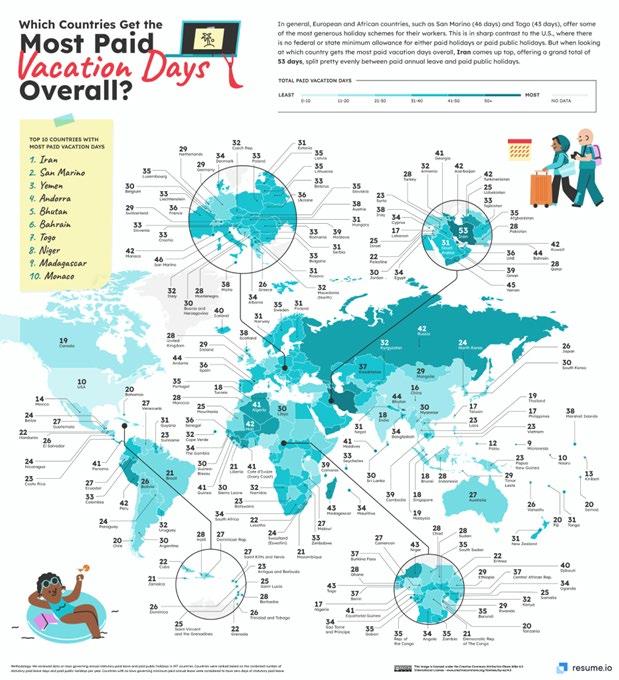
African and Middle Eastern countries dominate the top of the table. Iran has the most statutory annual vacation days in the world (53), with a clear week’s
worth more than second-placed San Marino (46). As well as a reasonable 26 days of paid leave, Iran has nearly a month of public holidays (27 days), which is more than any other country. Religious holidays and days to mark events concerning the Islamic Revolution contribute to this total.
Days: Which Country Gets The Most?
Paid Vacation
Submit Your Articles HRIS & Payroll Excellence presented by HR.com NOVEMBER 2022 23
The U.S. Has the World’s Least Paid Leave (Hint: It’s Zero)
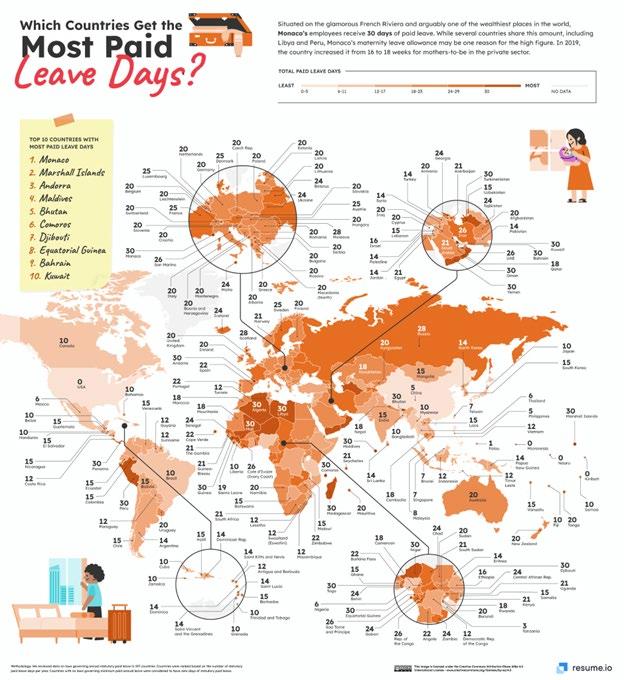
Four weeks’ leave has become something of a norm around much of the world – though some count it in working days (i.e., 20 days) and some in full weeks
or a month (28-30 days). We identified 22 countries with a 30-day leave plan, of which 10 are in Africa. The average by country is 18.2 days of paid leave per year.
Submit Your Articles HRIS & Payroll Excellence presented by HR.com NOVEMBER 2022 24
Paid Vacation Days: Which Country Gets The Most?
San Marino is Europe’s Capital of Public Holidays
The U.S. does at least have 10 “legal public holidays,” although it is not obligatory for private employers to honor them with days off (except in lucky Massachusetts and Rhode Island). However, state and federal organizations and some private firms do award these days as leave. The majority
of private employers give paid time off for New Year’s Day, Memorial Day (the last Monday in May), Independence Day, Labor Day (the first Monday in September), Thanksgiving (the fourth Thursday in November), and Christmas Day. Juneteenth and the birthdays of Martin Luther King, Jr. and George Washington are more of a lottery.
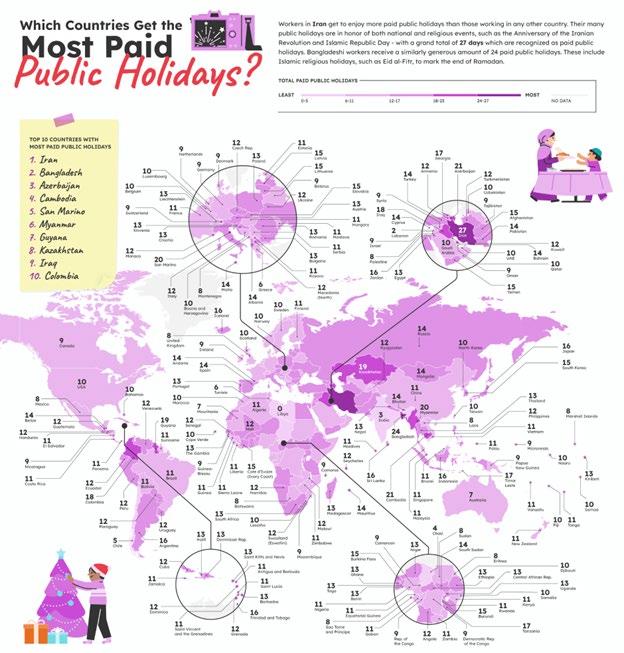
Submit Your Articles HRIS & Payroll Excellence presented by HR.com NOVEMBER 2022 25
Paid Vacation Days: Which Country Gets The Most?


Submit Your Articles HRIS & Payroll Excellence presented by HR.com NOVEMBER 2022 26
Lotte van Rijswijk is Content Team Lead at Resume.io.
Would you like to comment? To read the complete article, click here Paid Vacation Days: Which Country Gets The Most?
The Challenges of Payroll and Compliance in 2022-23
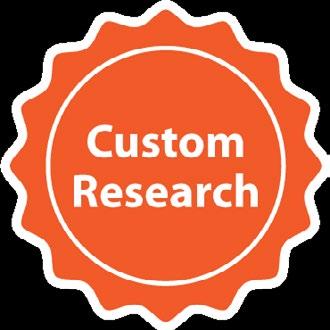
How remote work, security breaches, fast-changing regulations and continuous innovations have made payroll more complex

Sponsored by:
Special Research Supplement November 2022 INTERACTIVE NOVEMBER 2022
RESEARCH REPORT SUMMARY
The Challenges of Payroll and Compliance in 2022-23 29

How remote work, security breaches, fast-changing regulations and continuous innovations have made payroll more complex
Survey conducted by: Sponsored by:
The HR Research Institute, powered by HR.com, the world’s largest social network for Human Resources professionals, is a key part of our mandate to inform and educate today’s HR professionals. Over the past three years, the HR Research Institute has produced more than 85 exclusive primary research and state of the industry reports, along with corresponding infographics in many cases, based on the surveys of thousands of HR professionals. Each research report highlights current HR trends, benchmarks, and industry best practices. HR Research Institute Reports and Infographics are available online, and always free, at www.hr.com/ featuredresearch
INDEX
28 CUSTOM RESEARCH RESEARCH REPORT SUMMARY
The Challenges of Payroll and Compliance in 2022-23

How remote work, security breaches, fast-changing regulations and continuous innovations have made payroll more complex
Processing payroll has always been a critical, compliance-driven endeavor, but thanks to recent global events and current economic conditions, it has become increasingly complex. In an era of remote and hybrid work, costly security breaches, and threats to employees’ financial security, payroll experts must be up to a wide range of new challenges.
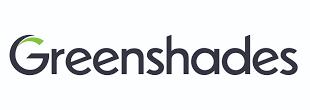
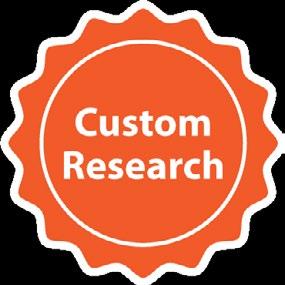
To understand these issues, the HR Research Institute conducted new research in partnership with Greenshades, an organization specializing in payroll, HR and tax compliance problem solving. The survey ran in the third quarter of 2022, when we gathered 233 responses from HR professionals in virtually every industry vertical.
Compliance with wage, hour, and taxation policies is seen as a core focus by a plurality, and about three-quarters of large organization say it is core Our survey started with capturing the perception of HR professionals regarding compliance with wage, hour, and taxation policies. Respondents are most likely to view compliance as a core focus and valuable part of their job, with 13% deeming it as a “necessary evil” that distracts from the
core mission. This indicates that respondents understand the importance of compliance, but a small proportion is struggling with handling it. Nearly three-quarters (74%) of large organizations (with 1,000 more employees) see compliance a core focus.
There is no consensus about how challenging or time-consuming compliance is
To clarify how challenging it is for organizations to comply with all wage, hour, and taxation policies and regulations, we asked respondents to rate it on a scale of 1 (very easy) to 5 (it is a significant challenge). Forty-seven percent say compliance is easy (1 or 2) while a quarter of respondents view it as difficult (4 or 5). Another 28% rate in the middle between easy and challenging. Automation could be the key to dealing with these challenges, as we discuss below.
29 CUSTOM RESEARCH RESEARCH REPORT SUMMARY
Survey Question: On a scale of 1 to 5, how challenging is it for your organization to comply with all wage, hour, and taxation policies and regulations?
(Note: this includes local, national, and corporate)
Similarly, when asked about how much time and effort goes into compliance, a third say it requires considerable time and effort and another 28% say it required moderate effort. Only about two-fifths indicate it requires little time and effort.
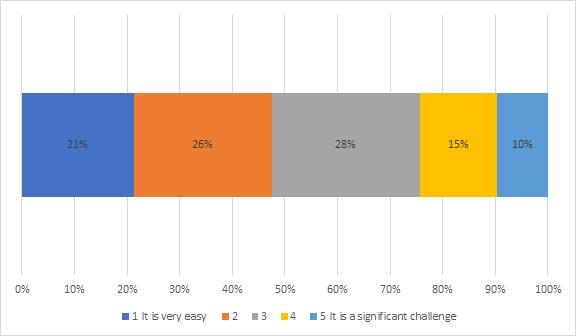
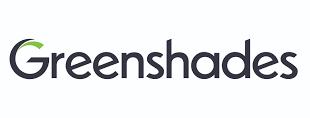
The bottom line is that there is no consensus about how challenging or time-consuming compliance is. Some organizations find it relatively easy and others continue to struggle. Our next step was to investigate why so many still seem to struggle in an area where most companies have established practices and long experience.
Remote work brings with it numerous challenges to compliance
The dramatic increase in remote work in recent years has impacted organizational processes at multiple levels, including payroll processing. An overwhelming majority (84%) of respondents say some or all of their employees are allowed to work remotely. Consequently, payroll professionals must be aware of local and state regulations, and tax implications based on the physical location of employee etc. While most organizations have adjusted to these changes with minimal disruptions, almost a third (29%) say compliance with wage, hour, and tax regulations has become harder with the increase in remote work.
30 CUSTOM RESEARCH RESEARCH REPORT SUMMARY
A significant proportion of organizations struggle with automation and collecting tools and expertise needed to manage compliance
Automation is another area where there is no consensus. While a third say the compliance processes in their organizations are automated to a high or very high degree, only a slightly lesser proportion (29%) say automation of compliance in their organization is done to a very low degree or not at all.
Compliance requires substantial support in terms of tools and expertise. While three-fifths (61%) agree or strongly agree that they have all the tools and expertise needed to manage compliance, this still leaves 39% who do not agree. Some organizations (16%) disagree or strongly disagree that they have the tools and expertise needed to manage compliance.
The risk and costs associated with noncompliance are serious, and organizations must understand the importance of investments in automation, tools, and expertise to ensure compliance. Organizations that improve automation are seen to have overall better efficiency and results in compliance related processes.

Security breaches may be relatively rare, but their effects are devastating More than one in ten (13%) of organizations say they have been impacted by attendance, scheduling, and payroll system security breaches in the past two years. While this number may seem low, we view it as quite significant given that this was only over a two-year period.

Of the organizations that experienced breaches, about half (45%) rated the disruption as major and a further 40% rated the disruption as minor. Only a few, 15%, managed to handle the disruption with ease.
Of the various impacts of security breaches, the most prominent is the effect on employee morale, with three-fifths saying it brought down employee morale. About half (47%) say the breach disrupted the whole employee management system from HR to payroll, and two-fifths say it damaged the employer brand and reputation. About a third also say that the breach resulted in higher turnover. Employee turnover has multiple short- and longterm consequences for organizations and can cause majorsevere financial losses beyond the cost of recruiting and training a new employee.
31 CUSTOM RESEARCH RESEARCH REPORT SUMMARY
Organizations that faced security breaches responded by improving security training for personnel (72%), changing security policies (67%), changing payroll providers (44%). Interestingly, 28% moved payroll from an outsourced provider to a self-managed model in response to security breaches. With a range of increasingly affordable self-managed payroll options available in the market, it could provide a cost-effective and customized solution for organizations to have greater control over the security of their payroll systems.
It must be noted that two-fifths (43%) of organizations that had not suffered security breaches decided to audit or review their own business continuity, security, and privacy policies when learning about other organizations' security breaches. Most organization also believe security breaches to have multi-tiered effects, with over two-thirds of the respondents say a security breach would disrupt day-to-day tasks and over half of the respondents say a security breach would damage the employer brand and reputation.

Survey Question: If there is a future security breach and your ability to process payroll and/or ensure paycheck accuracy is impacted, how do you think that would affect your business? (select all that apply)

32 CUSTOM RESEARCH RESEARCH REPORT SUMMARY
Earned wage access has become a more common add-on
Many organizations are investing in complementary payroll solutions. The most widely selected add-on is earned wage access, a financial service that gives employees access to a portion of the wages they’ve earned before the end of their payroll cycle. About a third of responding organizations offer earned wage access.

moderate degree, low degree, very low degree, or no automation at all. Results indicate that organizations with highly automated compliance systems are almost twice as likely as less automated organizations to find compliance very easy, and they are nearly 10 times as likely to say compliance takes little time and effort. Automation apparently helps in reducing the manual labor and making the process more streamlined resulting in cost and time savings.
Earned wage access is also the add-on respondents are most likely to believe has a positive impact on employees (cited by 48%). And, it is the one most likely to be assessed over the next year by organizations that do not already provide it.
Automation is key to improving the efficacy of the compliance process

We compared organizations with a high to very high degree of automation of compliance processes with organizations that had a
Automation also makes tracking regulatory changes easier at the local, state, and national levels. Highly automated organizations more likely than less automated ones to say their ability to track national regulatory changes is above or well above average.
Key takeaways
Organizations that are struggling with compliance may look to audit their processes to identify areas of concern.
33
CUSTOM RESEARCH RESEARCH REPORT SUMMARY
Survey
Question: On a scale of 1 to 5, how challenging is it for your organization to comply with all wage, hour, and taxation policies and regulations? (Note: this includes local, national, and corporate)
Automation seems to be one key in reducing the burden of compliance in terms of the effort it takes to do payroll and ability to track regulatory changes. Organizations may be well-advised to investigate automation solutions to reap these benefits.
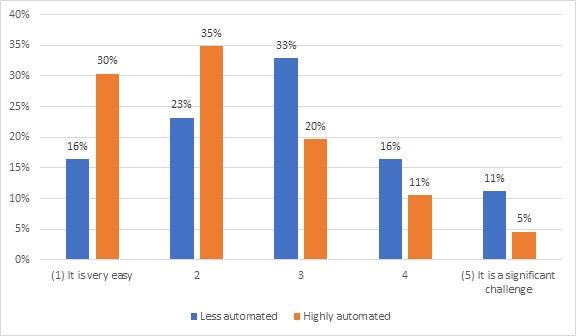
Despite lower incidence of security breaches, their impact on the organization as a whole is significant. Organizations must consider revamping policies, increasing training, and/or changing the payroll provider to minimize these risks. With the prevalence of remote work, organizations must also focus on developing policies and
procedures that help in remaining compliant while accommodating a variety of work arrangements.
Lastly, organizations must track regulatory changes at various levels of government through assistance from experts, partners, and information resources to help stay abreast of legal and compliance issues associated with various levels of government.
1 Count includes both complete and partial responses
2 Basiouny, A. (2022, August 2). Employee turnover costs more than you think. Knowledge at Wharton. Retrieved from https://knowledge.wharton.upenn.edu/article/whyemployee-turnover-costs-more-than-you-think/

34 CUSTOM RESEARCH RESEARCH REPORT SUMMARY

To learn more about The Challenges of Payroll and Compliance in 2022-23 survey and to get strategic outcomes, plus 10 key findings from the survey that you are able to apply right away, we invite you to download and read the report today.
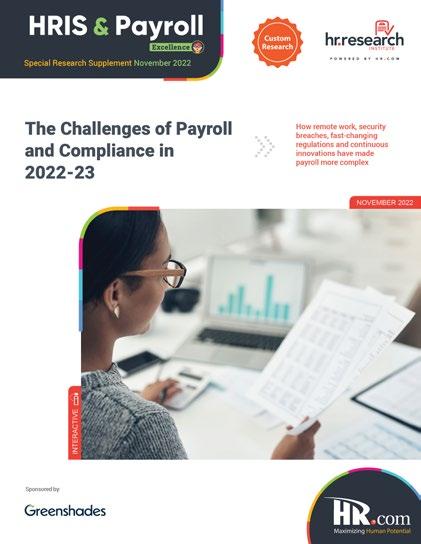


Exclusive HR.com Research
The Challenges of Payroll and Compliance in 2022-23
READ THE REPORT
36 CUSTOM RESEARCH RESEARCH REPORT SUMMARY

The Challenges of Payroll and Compliance in 2022-23 HRIS & Payroll Excellence • November 2022 For more information: 1.877.472.6648 sales@hr.com www.HR.com/epubs The HR Research Institute tracks human resources trends and best practices. Learn more at hr.com/featuredresearch
Student Debt Relief: Questions Employers Face

Designing a student loan program that is broadly fair for all workers
By Matt Bahl and Riya Patil, Financial Health Network
Studentdebt has been both a prohibiting factor and financial health burden for college-goers for decades. The cost of college has increased 169% since the 1980s, while college graduate pay is up only 19%. This has caused many college graduates and future college students to question not only the value of a college degree, but also the negative impact college debt has or could have on their lives.
College debt is the only debt that cannot be discharged through bankruptcy or death, and 81% of adults with college debt have delayed major life milestones, such as getting married, having children, and buying a home. Economists have frequently pointed to student debt’s role in exacerbating racial and generational inequality, and it has served as an anchor on economic growth. In short, student debt is a financial health challenges for students, their families, and our economy.
Submit Your Articles HRIS & Payroll Excellence presented by HR.com NOVEMBER 2022 38
Student Debt Relief: Questions Employers Face

So, when President Biden announced a three-part plan to provide student debt relief, it was generally met with support, especially among younger people. With targeted debt relief and other measures to help tackle student debt, the President’s plan, though certainly historic, raises a series of lingering questions that employers will be wrestling with for years.
A Drop in the Student Debt Bucket: An Enduring Issue for Employees and Employers
Will the President’s debt relief program solve the student debt crisis? The short answer is: no. In the near term, the Department of Education estimates that about 20 million borrowers will see their whole debt balance forgiven under this program. For those individuals, this is a potentially life-changing event. When combined with other student debt relief programs, the relief for working people with college debt is substantial.
However, at least one analysis projects that the student debt crisis will reconstitute itself, and we will return to a $1.6 trillion dollar debt burden within four years. Furthermore, even if all federal student debt was canceled today, within 15 years it would return to $1.6 trillion. This points to a deeper structural
problem that the relief program does not address: the rising costs of a college degree.
For employers, this means that student debt will continue to be a pain point for the workforce. There is no guarantee that future government relief will occur, and the program itself could face legal challenges. As the debt toll spawns anew, employers will remain a key stakeholder in helping workers address the perils of student debt.
Fair Debt Relief
Employers have long struggled with designing a student loan program that is broadly fair for all workers including those without student debt. With fixed budgets that compel them to prioritize where they place their benefit dollars, employers have to navigate tradeoffs in designing their total reward programs.
After compensation, healthcare, and retirement plan contributions, employer budgets may be insufficient to cover the full cost of a student loan repayment program, and still provide additional financial health benefits for the broad needs of workers. There are, certainly, strategies that employers use to address this.
Submit Your Articles HRIS & Payroll Excellence presented by HR.com NOVEMBER 2022 39
One example, the Financial Health Network provides staff with a stipend that can be used to either pay down student debt or contribute to an emergency savings account. Further, Abbott Laboratories also has a program that enables full-time and part-time employees, who qualify for the company’s 401(k) and who contribute 2% of their eligible pay toward student loans to receive a 5% employer-provided contribution to their 401(k) plans, without any 401(k) contribution of their own.
Designing Fair and Equitable Workplace Credit and Debt Programs
Ultimately, student debt will continue to be a reality, and for some, the sole means by which to pay for college. Employers will remain a key stakeholder in helping their workers navigate this challenge, absent comprehensive reform of higher education financing. However, student debt is just one debt challenge –there are other credit and debt issues and challenges workers face.
A recent Financial Health Network study found that workers are struggling with a myriad of debts: 91%
of workers carry an average credit card debt of approximately $3,000, 54% have car loans with an average debt of $10,000, and 43% have personal loan debt with an average balance of $4,050. This data and insight suggest employers should not just have a student loan strategy, but an overall credit and debt program to support their workforce.

When rolling out credit and debt benefits, employers should understand what falls under that umbrella. We define credit and debt benefits as those that help employees avoid borrowing for short-term needs (often at high rates), get them on a path to building long-term assets (like buying a home), and assist them in managing and repaying existing debt (like student loan or medical debt). The contours of these programs will vary based on the needs of the workforce, but having a comprehensive credit and debt strategy for your workforce is one way employers can anticipate the needs workers will have around student debt, design a program that is fair and equitable, and help their workers address the broader credit and debt issues they face.
As Vice President, Workplace Market Lead at Financial Health Network, Matt Bahl builds relationships with employers committed to advancing financial health for their workforces. He believes it takes a movement to improve workers’ financial lives, connecting HR and benefits leaders with the Financial Health Network’s expertise and solutions to create a strong financial health ecosystem.
Would you like to comment?
As an Associate on the Workplace Solutions team at Financial Health Network, Riya Patil helps execute research and consulting projects focused on improving workers’ financial health and helping employers design effective financial health benefits and products.

Submit Your Articles HRIS & Payroll Excellence presented by HR.com NOVEMBER 2022 40
Student Debt Relief: Questions Employers Face
3 Things We Learned Moving To A Transparent Pay Approach
Building an equitable and transparent workplace culture
 By Cydnee DeToy, Next Street
By Cydnee DeToy, Next Street
Q1 2022, Next Street made two major changes to its compensation approach to make it more equitable and transparent. First, we created consistent compensation bands for the entire firm, so team members
In
at the same level, regardless of function or business line, are compensated the same. Second, we shared those compensation bands along with a clear, rigorous methodology for merit-based pay increases and promotions,
with the full firm. We shouted the new approach from the rooftops, ensuring staff understood the new approach and felt empowered to navigate within it.
Submit Your Articles HRIS & Payroll Excellence presented by HR.com NOVEMBER 2022 41 TOP PICK
At Next Street, a mission-driven technology and solutions firm which designs and develops solutions to connect underserved small businesses with the right resources at the right time, we as a leadership team had always felt ok (ish) about our compensation approach. We tried to pay competitively for a mission-driven firm. We published our compensation bands and had clear parameters for promotion. However, it always felt a little squishy – our bands were readily available on our shared drive, but we hoped no one looked too closely and we could never quite say why someone got a merit-based pay increase in one cycle and not the other.
So earlier this year, we created a new, radically transparent approach. Let me tell you, these changes felt uncomfortable. Were staff going to be satisfied? Would there be unintended consequences we could not foresee?
However, as a leadership team committed to leading with our values, we knew that this was what we needed to do. Here is what we learned:
1. Compensation has to be aligned with your organizational values: Values should be enforced and felt in companies’ informal culture and ways of working, as well as formal structures and policies. Many companies imbue their values into their culture or perks, but stop short of driving them all the way through their
infrastructure. We refreshed our values last year and realized that in order to live into them authentically, specifically our Antiracism and Sustainable Growth values, we needed to update our compensation approach. Doing so allowed us to show our commitment to these values to staff and bring them to life.
2. Pay transparency is an excellent recruiting tool: As we communicated more about compensation with staff, we began being more intentional about discussing salary expectations and our compensation methodology with candidates. Hiring managers asked candidates about their salary expectations on phone screens, opened up discussions around the company’s compensation approach, and shared more about our methodology when making a formal offer. This had two benefits – it helped candidates get to know the ethos of our firm early in the process and it made efficient use of our team and the candidates’ time if a candidate was not aligned with the compensation for the job.
3. Pay transparency empowers staff and managers: Before refreshing our compensation approach, staff members knew the lower and upper thresholds of their compensation band and what it took to be promoted, however, did not know how to advance within a band. Going into each review cycle was like going
into a black box for staff and people managers; no matter how excellent their performance, they did not know if they would receive a pay increase and it caused confusion and frustration. Our new methodology now clearly ties pay to performance and gives staff a roadmap of what is needed to advance within a band.
As the City of New York becomes the largest jurisdiction in the United States to require posting salary ranges in job requisitions this month, it is requiring more and more companies to look critically at their compensation philosophy. I am hopeful that this mandated transparency spurs the right changes and drives to the desired outcomes: pay equity across race/ethnicity and gender.
There is more that can be done by Next Street, other companies, and lawmakers, such as reviewing salary negotiation practices and mandating annual pay audits. However, pay transparency is a step in the right direction, reinforcing organizational values, recruiting aligned candidates, and empowering team members.
Would you like to comment?

3 Things We Learned Moving To A Transparent Pay Approach
Submit Your Articles HRIS & Payroll Excellence presented by HR.com NOVEMBER 2022 42
Cydnee DeToy is a Partner and Chief of Staff at Next Street.
EVENTS & HR.COM WEBCASTS UPCOMING www.hr.com/upcoming_webcasts www.hr.com/virtualconferences
our Upcoming Webcasts Schedule and Register Today!
our Upcoming Virtual Conference Schedule and Register Today! How to get more from your tech stack ahead of a recession
2022
PM - 3:30 PM ET REGISTER Behind the Screen: How to Compliantly Hire Someone
2022
PM - 1:00 PM ET Cutting Costs and Consolidating Tech with Outbound Recruiting
8, 2022
AM - 12:00 PM ET REGISTER The Evolution of Employee Recognition2023 Trends
2022
AM - 12:00 PM ET
People Strategy for the #FutureOfWork January 19, 2023 Leveraging Technology to Remove Bias & Diversify Your Pipeline
7, 2022
PM - 1:00 PM ET
VIRTUAL EVENTS The Future of Recruitment Technologies 2022 December 7-8, 2022 REGISTER The State of Contingent Work January 18, 2023 REGISTER REGISTER REGISTER REGISTER REGISTER
VIRTUAL
View
View
December 5,
2:30
December 1,
12:00
December
11:00
December 6,
11:00
WEBCASTS
December
12:00
WEBCASTS
The Future Of Work: Five Considerations For Flexibility
Flexibility is the new currency for employees
By Keith Falk, OneDigital
The future of work continues to shift. Before 2020, flexible work arrangements were rare, primarily reserved for high-performing working parents. Think back just a few years ago most of us could never imagine an entry-level employee working from home. They would need to prove their worth first and then have a valid reason (in the eyes of their manager) for why they needed the flexibility. Fast forward to today and working from home has quickly become the norm for many companies.
McKinsey’s American Opportunity Survey found that 58% of employees can work from home at least one day a week, and 35% have the option to work from home five days a week. In the current challenging job market with nearly double the number of jobs than available workers, most employers are struggling to find and keep high-quality talent. Providing a unique sense of flexibility is no question a fundamental benefit in winning the war for talent.
Flexibility Is the New Currency for Employees
Employers who have embraced a flexible workplace approach are seeing significant advantages compared to employers who are requiring a fully in-person environment. In fact, 70% of job seekers find flexible workplaces attractive. With 3.5% unemployment and

4 million quits in July, employees are effectively voting with their feet. Simply put, rethinking the nature of work is a requirement for today’s workforce, and if your company is not keeping up with this workforce need, you’ll likely be one of the employers witnessing mass exits.
Regarding flexibility, there is no “one size fits all” model. Flexibility should, and will, look differently for every employer. What is clear is that regardless of industry and function, employers must rethink what flexibility means to them and their unique workforce. Gone are the days of writing off flexibility simply because it’s not the norm. Employers must take a thorough look at their workplace and think creatively about flexible solutions.
Submit Your Articles HRIS & Payroll Excellence presented by HR.com NOVEMBER 2022 44
There is no right, wrong or perfect way to address flexibility in the workplace. If the pandemic taught us anything, it’s that business can function in varying and unconventional ways. As you look to implement flexibility, think about these five considerations:
1. What are you trying to solve? From retention and employee satisfaction, to attracting new talent and various other business issues facing employers, it’s important to clarify what you are hoping to achieve through a more flexible workplace. Without identifying an end goal, your efforts for flexibility will likely miss the mark.
2. Know your audience. Look at the demographics of your workforce and understand what your employees want from flexibility. If you’re not sure, ask them! With a multigenerational workforce, one flexible plan may not be the right fit for all your employees. For example, working parents or those caring for aging parents may have different needs than younger generations who have grown up with technology and are used to working remotely. What’s important, however, is to avoid making assumptions, and rather ask your employees directly what they value.
3. Mind the gap. Being equitable is the cornerstone of any employment practice, and flexibility is no different. Depending on the job function, this can be challenging and work against the very goals you are looking to achieve. For example, a flexible work program
may widen the divide between exempt and nonexempt employees because some jobs may not lend themselves to the same flexibility, leading to low morale within the team that may not be able to take advantage of the same opportunities.
4. Test it out. Have a trial period to evaluate what is working and what isn’t. Setting up regular intervals to survey employees and managers about the success of the program can help provide real time feedback that allows you to make changes to the program during a pilot time. Additionally, set metrics to evaluate success and utilize this testing period to see how you track toward your goals and whether the current state of flexibility is providing the needed output.
5. Set clear expectations When it comes to flexibility, it’s important to make sure that employees and managers understand that there may be a business reason to change the program, and nothing is set in stone. This transparency allows for less confusion and negativity in the future if policies change.
As the future of work continues to evolve, opportunities for flexibility sit squarely at the center of any successful business. Employers that adapt and think creatively about flexible options will be better equipped to succeed in the future.

Keith Falk is a member of OneDigital West Region as Regional Managing Director of HR Consulting. Prior to joining OneDigital, Keith led human capital and operations for Fortune 500 and technology start-ups for both regional and global environments.
Would you like to comment?

Submit Your Articles HRIS & Payroll Excellence presented by HR.com NOVEMBER 2022 45
Future
The
Of Work: Five Considerations For Flexibility
HRCI® & SHRM® CERTIFICATION PREP COURSES
GROUP RATES AVAILABLE
For HR Professionals
Show that management values the importance of the HR function, and has a commitment to development and improvement of HR staff.
Ensure that each person in your HR department has a standard and consistent understanding of policies, procedures, and regulations.
Place your HR team in a certification program as a rewarding team building achievement.
For Your Organization
Certified HR professionals help companies avoid risk by understanding compliance, laws, and regulations to properly manage your workforce.
HR Professionals lead employee engagement and development programs saving the company money through lower turnover and greater productivity and engagement.
A skilled HR professional can track important KPIs for the organization to make a major impact on strategic decisions and objectives, including: succession planning, staffing, and forecasting.
HR.com/prepcourse CALL TODAY TO FIND OUT MORE 1.877.472.6648 ext. 3 | sales@hr.com
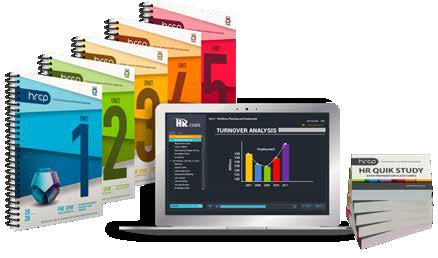
1 Less expensive than a masters or PhD program, and very manageable
with 2. legislation and best practices 3. Recognized, Industry benchmark,
HR Professionals We offer
rates
For
All
CALL TODAY TO FIND OUT MORE 1.877.472.6648 ext. 3 | sales@hr.com | HR.com/prepcourse Group Rate Options 1 2 3
to prepare
held by 500,000+
group
for teams of 5+ or more for our regularly scheduled PHR/SPHR/ SHRM or aPHR courses.
groups of 12+, we can design a more customized experience that meets your overall length of the course. Groups rates for HRCI exams are also available as an add-on.
group purchases come with 1 year of HR Prime membership for each attendee to gain the tools and updates needed to stay informed and compliant
Bill 41: Employers’ Obligations To Injured Workers Set To Increase
British Columbia proposes changes to the Workers Compensation Act
 By Gary T. Clarke and David M. Price, Stikeman Elliott
By Gary T. Clarke and David M. Price, Stikeman Elliott
On November 1, 2022, the Workers Compensation Amendment Act (No. 2), or Bill 41, passed second reading in the British Columbia legislature. If enacted, Bill 41 would make a number of important changes to the Workers Compensation Act (the “Act”) that would increase employers’ obligations to injured workers.
Duty to Accommodate and Return Injured Workers to Work
If passed, Bill 41 would create a new employer duty to return injured workers back to their pre-injury work or otherwise provide alternative work, as well as accommodate injured workers with any necessary changes to their work or the workplace up to the point of undue hardship.
These duties would apply only to employers with 20 or more workers, and in respect of workers with at least 12 months of continuous service before their injury. It should be further noted that these duties would expire 2 years after the date of injury, if the worker has not returned to work or if the worker is carrying out suitable work.
This new duty to accommodate would be separate from the existing accommodation duty under the Human Rights Code.
If an employer terminates the returned worker within 6 months of their return, the legislation deems the employer to have breached its duties under the Act, unless the employer can demonstrate that the termination was unrelated to the worker’s injury. If the employer breaches the duty to maintain employment, WorkSafeBC may provide the worker with an amount equivalent to one year’s compensation under the temporary total or partial disability provisions of the Act.
Submit Your Articles HRIS & Payroll Excellence presented by HR.com NOVEMBER 2022 48 TOP PICK
In addition, Bill 41 would establish a mutual duty to cooperate by both the employer and worker. Specifically, they will need to establish and maintain communication as soon as practicable after the injury occurs, identify suitable work for the worker that, if possible, restore their pre-injury wages; and apprise WorkSafeBC of the worker’s return to work or continuation of work.
Either party may request that WorkSafeBC investigate a failure to cooperate, and WorkSafeBC may impose remedies, including reducing or suspending payments of compensation to the worker until they comply with their obligations.
Prohibition on Wage Suppression, New WorkSafeBC Penalty Authority
Bill 41 also aims to crack down on claim suppression. The amendments include a new provision expressly prohibiting employers from discouraging or persuading workers from submitting compensation claims or receiving compensation under the Act. Employers suppressing claims may face investigation and penalties for doing so. The Act currently prohibits employers from discouraging workers from reporting injuries to WorkSafeBC and any agreement to waive or forego benefits under the compensation provisions of the Act is void.
To further strengthen WorkSafeBC’s enforcement capabilities, Bill 41 would permit WorkSafeBC to impose administrative penalties for breaches of the employer’s duty to cooperate and maintain employment.

Changes to the Inflation Adjustments for Periodic Payments
Bill 41 also indexes periodic payments to inflation. Currently, the Act calculates the annual adjustment by referring to the Consumer Price Index (“CPI”) and subtracting 1%. It does not allow an adjustment above 4%. Bill 41 would remove the 1% subtracting rule. Instead, under the proposed framework, periodic payments will adjust at the same rate as inflation (as measured by the CPI), up to 4%. Further, WorkSafeBC would have the authority to increase the percentage above 4%, to match a higher inflation rate.
Other Proposed Changes
Bill 41 would also require interest payments for outstanding benefits owed to a worker for over 180 days, pursuant to a review or appeal decision.
It would also create an independent office of the Fair Practices Commissioner. Its mandate will be to investigate complaints of unfair dealings with WorkSafeBC, and to recommend changes and improvements to WorkSafeBC.
Finally, Bill 41 gives employers and workers the option to request an independent medical opinion as part of the appeals process to the Workers Compensation Appeal Tribunal. Either the employer or worker can request that the Tribunal obtain an independent medical opinion.
Conclusion
The new provisions, if enacted, would increase employers’ obligations under the workers’ compensation system.
The authors would like to acknowledge the assistance of Cameron Penn, articling student, in the preparation of this article.

DISCLAIMER: This article is intended to convey general information about legal issues and developments as of the indicated date. It does not constitute legal advice and must not be treated or relied on as such.
This article first appeared here
Gary Clarke is a Partner and Co-Head, and David Price is an Associate of the Employment & Labour Group at Stikeman Elliott. Would you like to comment?
Bill 41: Employers’ Obligations To Injured Workers Set To Increase
Submit Your Articles HRIS & Payroll Excellence presented by HR.com NOVEMBER 2022 49
We Need To Talk About The Metaverse
What is shaping our future, especially in tech?
By Nick Shah, Peterson Technology Partners
“Once a new technology rolls over you, if you’re not part of the steamroller, you’re part of the road.”—Stewart Brand, Writer
As a leader in the recruiting industry who operates primarily in the future-tech space (cloud computing, data science, and AI, especially AI), I am invested in tech industry trends. AI has always been of great interest to me and was the motivation for my company to start exploring the possibilities of AI disruption in recruitment.
As the head of an IT staffing firm, I need to know where the industry is headed, what new competencies are on the rise, and what new roles are being shaped. It is my responsibility to anticipate the needs that my clients will have in the future and prepare for them. It is also my responsibility to educate consultants on any directional changes that might impact their careers.
Where, then, is the IT industry headed?
I believe that the advent of the
metaverse is shaping up to be one of the most significant tech innovations of our generation.
Metaverse Is on the Verge of Blowing up
“The metaverse is here, and it’s not only transforming how we see the world but how we participate in it—from the factory floor to the meeting room.”— Satya Nadella, Microsoft CEO.
The Metaverse has become one of the hottest technological and socio-economic topics. The conversations around this new tech have already expanded far beyond the realm of the technical and into exciting tangents such as social contract theory, economics, and philosophy.
On the technical side, a handful of companies are already venturing into uncharted territories by combining different technologies like VR, 3D animation, blockchain, and many others, to create services for this new digital world. The “computerized, networked,
and interconnected world that we live in” that Bruce Schneier talks about, except this is bigger than just IoT. Instead, the metaverse can potentially be mixed into, and augment, not just our world but our reality.
Consider this—for a global tech giant like Facebook to change its name to Meta and invest billions in developing future tech in this direction demonstrates that the metaverse is set to enter the mainstream very soon. Microsoft, Nvidia, Roblox, and other tech giants are set to follow in Facebook’s (or should I say Meta’s) footsteps and launch their own metaverse-based platforms in the near future.
On the non-technical side, interesting conversations are being generated across multiple socio-economic disciplines about the impact this new platform would have on human interaction, the way we do business, and the way we shape our realities.
Submit Your Articles HRIS & Payroll Excellence presented by HR.com NOVEMBER 2022 50
Recent research published by the Analysis Group has predicted that metaverse-related growth could contribute as much as $3 trillion to the global economy within the next decade—a growth pattern that outstrips any other single tech system in the 21st century, second only to smartphones! A report by McKinsey suggests that $120 billion have been invested in metaverse tech in the first quarter of 2022 alone.
Think of the enormous impact that smartphones have had on human development over the last decade. The ways we communicate and interact with each other, and define relationships. The human connection itself has been redefined by the ubiquity of smartphones.
Parallels with Smartphones and IoT

We can’t imagine navigating the world today without a smartphone (Approximately 6.68 billion people today are regular smartphone users. That’s 83% of the global population). “There’s an application for everything!” is a common cry amongst smartphone users discovering the joys of food delivery apps, ride-share apps, interior design apps, dating apps, productivity apps, yoga apps... the list is endless.
All our essential day-to-day functions from banking to healthcare can be performed on smartphones. Most developed economies today operate with smartphone
access as a basic assumption. As do most businesses. Through the use of smarIoT-powered other IoT-powered devices most human beings have developed an alternate identity. An online self to match your offline persona. Via this surrogate, you occupy space on virtual platforms (like social media), interact with the online surrogates of other individuals, and conduct socio-economic transactions. Additionally, with the help of smartphones, this online self is ever-present.
If predictions are true, metaverse tech is headed in the same direction. It will grow into an internet-based platform with near-universal access and 3D identities, a virtual or mixed reality world where we exist parallel to the real world.
Submit Your Articles HRIS & Payroll Excellence presented by HR.com NOVEMBER 2022 51
We Need To Talk About The Metaverse
Where Does AI Feature?
The short answer is everywhere.
As metaverse tech expands AI can potentially play an important role in its development—from the infra structural level to the experiential.
Infrastructural: The immensely scalable and "always-on" nature of the metaverse means that it will depend on AI support to keep its infrastructure running smoothly. In this endeavor AI experts will have to team up with Dev Ops and other parallel proficiencies to create scalable solutions in communications, software base, and hardware to keep the whole operation running and troubleshooting.
Interactive: The immersive experience that the platform offers also means that AI will be required to play the role of guides, guaranteeing 24x7 support for new and confused users. Think virtual chatbots.
Trade and ownership: Like most big tech today the metaverse will be consumer driven and crypto-cur rency, blockchain technologies, and NFTs will be the basis of consumer transactions. Automating smart contracts, decentralizing ledgers, and blockchain tech will fall entirely within the realm of AI.
Personalization: The ultimate goal of any metaverse-based tool will be to offer a personalized experience. AI can provide this personalization by offering a digital experience tailored to each individual’s needs and learning paths using tools like NLP and computer vision.
What’s the Next Big Step?
In one word—consciousness.
Not AI consciousness (that is still a pipe dream no matter how advanced Google’s AI), but the deliberate study of human consciousness to try to find answers within ourselves to UI/UX questions posed by mixed reality i.e., a reality that is enhanced by interactions on the metaverse.
The science and philosophy of tare conscious mind is fascinating. Reality is fundamentally the basis upon which every individual constructs their version of the world and it’s built largely on preconceptions and best guesses. Which makes it, at once, both unique and mutable.
Scientists say that the last 20 years have been a golden age for the study of human consciousness and recent developments have led to a range of impactful real-world applications. I think virtual-world applications are far more exciting. For example, in 2021, neurosurgeons at John Hopkins performed the first-ever live patient surgery using mixed-reality devices. The doctors wore AR headsets that gave them an interactive display of the patient’s anatomy.
We can’t make the AI think of itself (just yet) but we can try to better understand how the
human mind works to find ways to enhance the metaverse experience.
We’ve Been Here Before
The exponential progression of tech means that major shifts in platforms occur at regular and decreasing intervals of time. The leap from mainframe computers to personal computers took nearly half a century. The progression from PCs to smartphones took less than two decades.
We are at the threshold of another revolution, one that will change the shape of our world. Metaverse tech’s impact on the IT industry will be game-changing. AI, data science, cyber security (and crime!), cloud computing, everything will be impacted by the coming of this new, reality-bending tech. We just have to be ready to evolve with it.
Nick Shah is the Founder and President of Peterson Technology Partners (PTP), and the Chief Executive Officer. After successfully experimenting with various business ventures, Nick began Peterson Technology Partners in 1997, with the goal of connecting Chicago’s top IT talent with its top companies. Would you like to comment?

Submit Your Articles HRIS & Payroll Excellence presented by HR.com NOVEMBER 2022 52
We Need To Talk About The Metaverse
Thank you for partnering with us!
Ceridian’s flagship platform Dayforce helps you manage the entire employee lifecycle, from recruiting and onboarding, to paying people and developing their careers.

Paychex, Inc. (Nasdaq: PAYX) is a leading provider of integrated human capital management software solutions for human resources, payroll, benefits, and insurance services.


UKG delivers best-in-class HR and workforce management in an unmatched suite of solutions and services, backed by people who care about yours. Our solutions create global workforce experiences that reflect the true connection between life and work.

THANK YOU
We’re creating an experience that helps over a million employees have the best HR experience possible. BambooHR sets people free to do great work—not just HR pros, but entire organizations
Oracle provides organizations a complete solution connecting every human resource process from hire to retire— including global HR, talent management, workforce management, and payroll.
 LEARN MORE
LEARN MORE
ADVERTISE WITH US
LEARN MORE
LEARN MORE
LEARN MORE
LEARN MORE
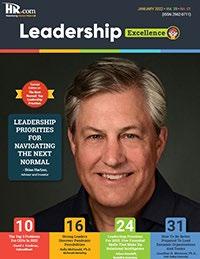
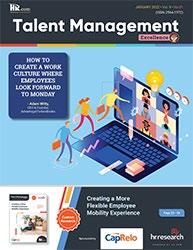

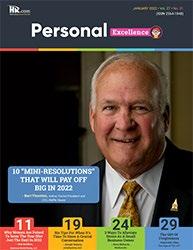
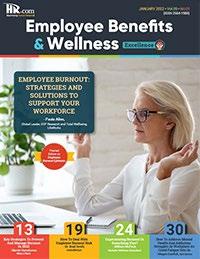

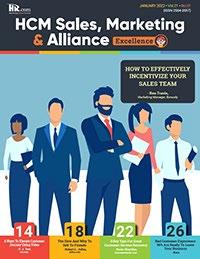
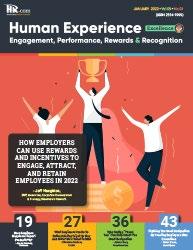
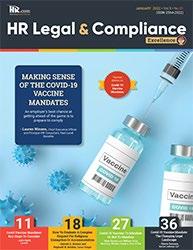
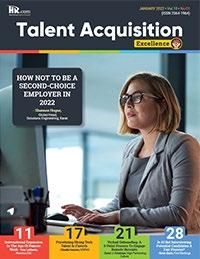
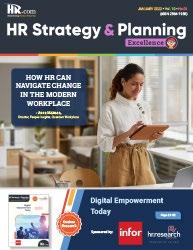
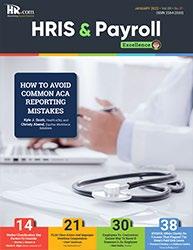
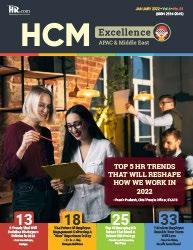
Like to submit an article? Use our online submission form or for more information go to www.hr.com/ExcellencePublications Publications 13 Targeted Publications to Reach Your Audience Informing, Educating, Enlightening and Assisting HR professionals in their personal and professional development, the Excellence series offers high-quality content through the publications!






























 Julie Winkle Giulioni
Julie Winkle Giulioni

 Dr. Beverly Kaye CEO, BevKaye&Co.
Dr. Beverly Kaye CEO, BevKaye&Co.


 Jenna Nye, CEO, On the Strip
Jenna Nye, CEO, On the Strip





 Tawanda Johnson, HR Leader, Sporting Smiles
Jimmy Minhas, Founder & CEO, GerdLi
Tawanda Johnson, HR Leader, Sporting Smiles
Jimmy Minhas, Founder & CEO, GerdLi

 Sally Johnson, CEO & Founder, Greenlightbooking
Sally Johnson, CEO & Founder, Greenlightbooking


































 By Cydnee DeToy, Next Street
By Cydnee DeToy, Next Street





 By Gary T. Clarke and David M. Price, Stikeman Elliott
By Gary T. Clarke and David M. Price, Stikeman Elliott








 LEARN MORE
LEARN MORE












